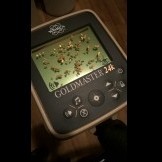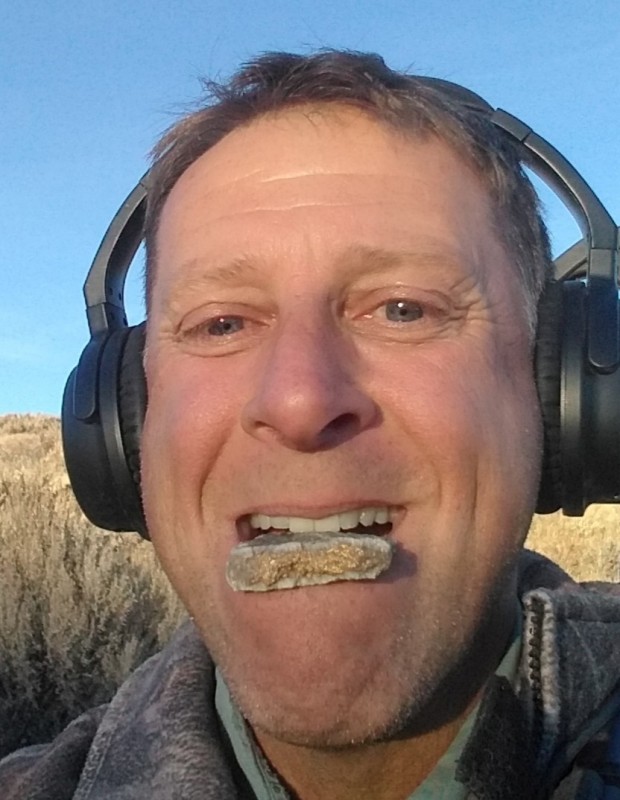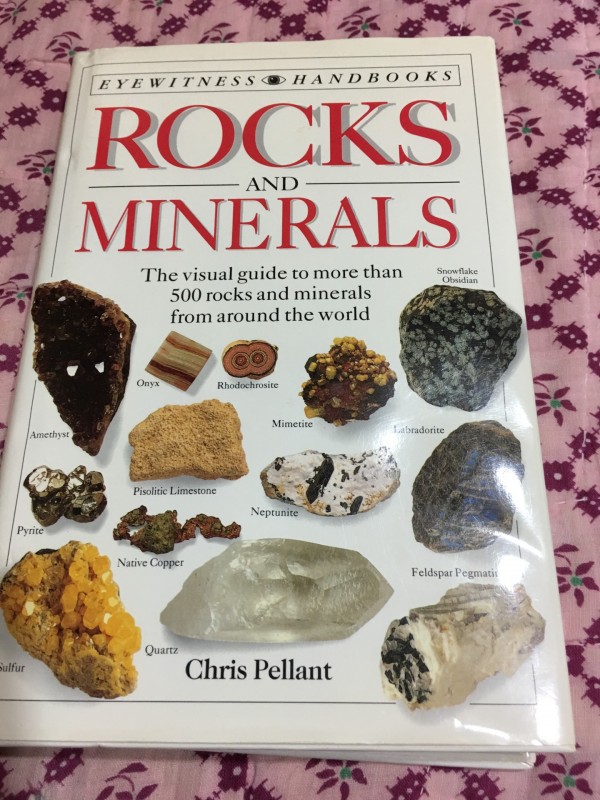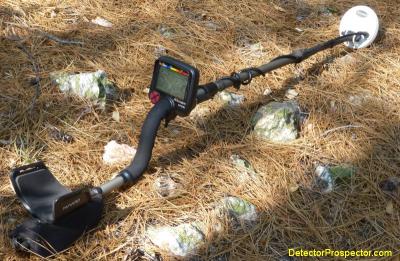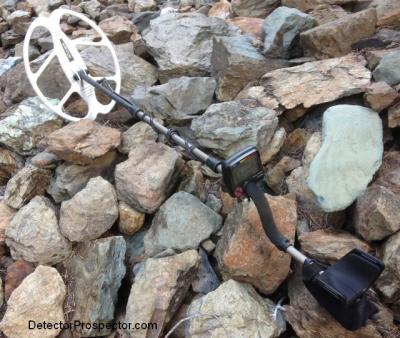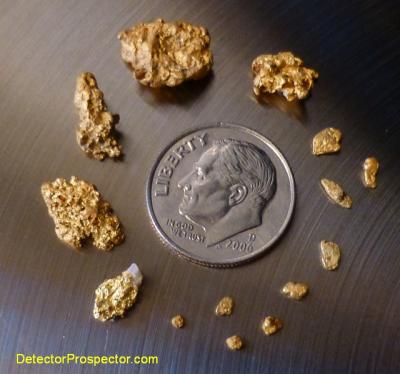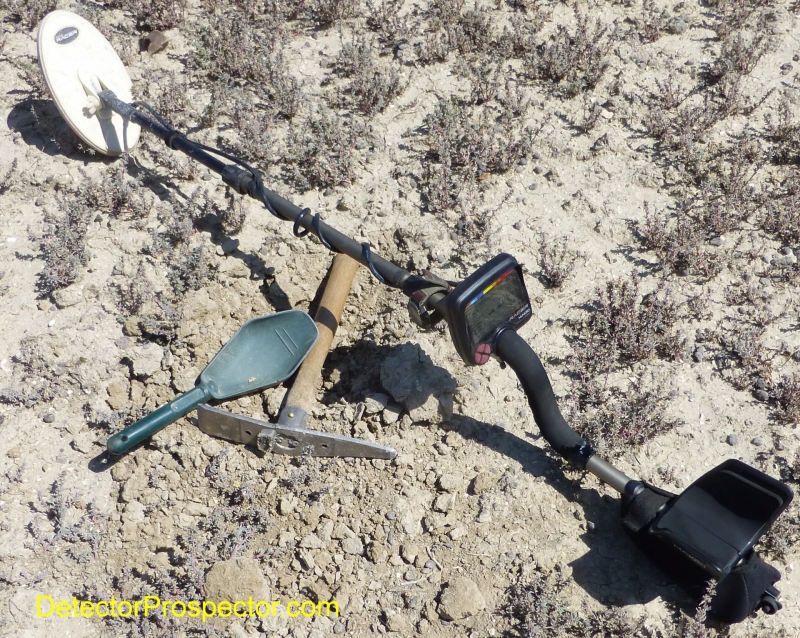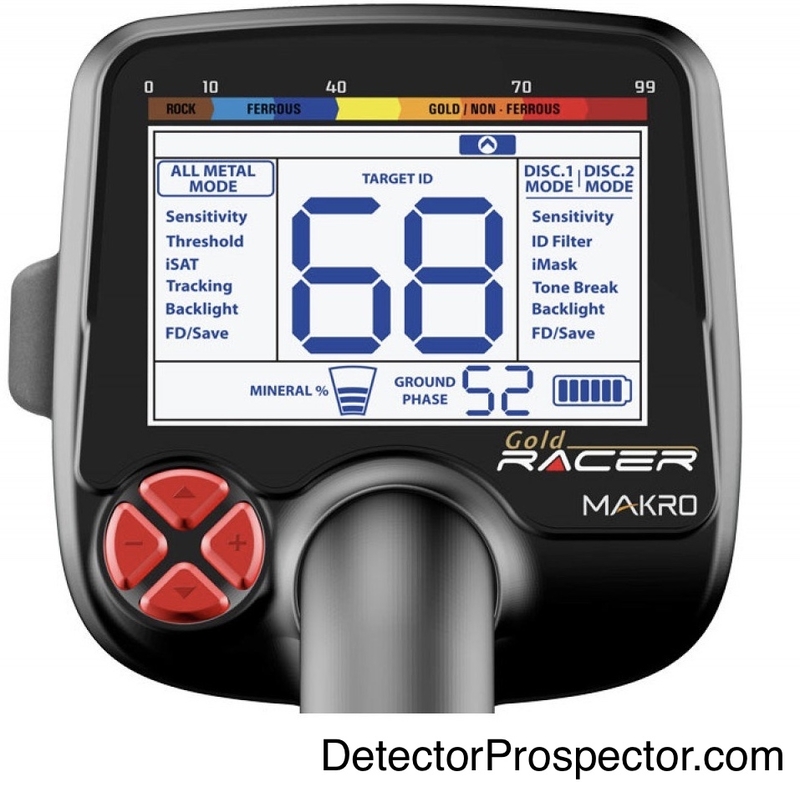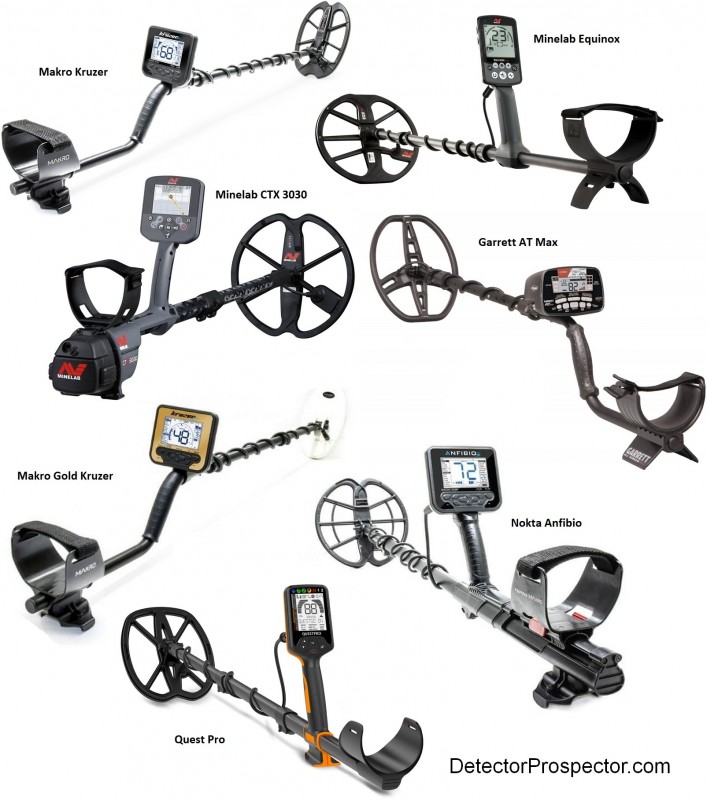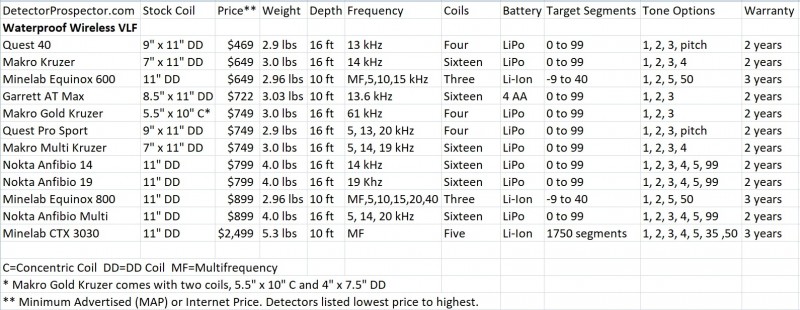Search the Community
Showing results for tags 'detector review'.
-
If we look at the detectors that are already out and the one’s coming out what do you want? The Nox 800 may not be the best swimmer but other than that it still does a good to great job of detecting. I can pick it up to go relic,coin and gold hunt on land or water. The Tarsacci bye the videos I’ve seen can be a good to great relic detector . What being said it really shines as a beach be it land or water. I myself haven’t seen it at a straight dirt digging coin detector. Then here comes the new AQ from Fisher and up front they say this is a water detector. It’s specialty is to find gold deeper than ever before in wet sand are in the water. The Nokta/Makro we just not sure but according to Dilek they are working hard to get it to us . The Garrett people not too long ago came out with the Apex . Any new detector some will say it’s as great as moms Apple pie and another say it’s not for me . What all this comes down to would you want to buy one detector that can do everything good to great? In a roundabout way getting something free. The other choice you would have is buy one for water another relic and another for nugget hunting. Then to if you wanted to go digging in the dirt for coins only you best add another detector. I really don’t want to be hauling all those detectors around that fits in it’s own little niche. I could see were it would be best to have a water detector if it’s made to handle saltwater. My reasoning is saltwater is unforgiving if it gets into the electronic of your detector. Now if you don’t do saltwater hunting but just freshwater I know from pass experience it is forgiving. Then you may not have need for water only detector. It comes down to buy one and get three free in that one. The other choice is buy and buy until you’ve got yourself covered in all of what you like to hunt . Chuck
-
I will say my Nox is even though I did well with my Explorer Xs when I had it.I think it is better in most situations and lighter and able to snag coins in the water too.The FBS machines may be better in a few situations but with the silver coin population dwindling I think these days the Nox is better for the tougher coins that are left.You can also change to a single frequency if EMI is a problem.In one part of park the EMI was so bad that it made my buddies explorer almost useless while I did good.For having the FBS technology at a certain time nothing will beat having the Explorer for the time it came out.Having that machine in 2000 helped me clean up even though I probably had about 40% of the skill and knowledge I have today.That machine was way ahead of it's time and made me look good. I did good on silver the first few years I had it and there was a lot of silver left because those machines before it missed them.The FBS machines probably have found more silver then any other machine in the turf by a wide margin. In 1 good year with the explorer I have found more silver then what the Nox could in the 2.5 years that I used it which includes the ones in the water where I could not bring a Explorer.FBS machine will always be legendary for silver coins.
-
A recent post here got me thinking, how many detectors have I bought? In April this year, I will have been detecting for 40 years. In those 40 years Ive owned 39 detectors lol. Borrowed or hired another 12. Wondering if anyone can beat this?
-
While on the main forum I 'clicked through' on an ad about a waterproof metal detector on eBay. That detector was at a Buy Now price under $60. I started reading the details and looking at some of the other 'similar items' and discovered that the low end market is upping its understanding of metal detectors. The product descriptions indicate an effort to market and capture the true nature of what metal detectors are used for in the field. https://www.ebay.com/i/303679961277?var=602921879060&norover=1&mpt=[CACHEBUSTER]&siteid=0&ipn=admain2&mkevt=1&mkrid=711-157953-782142-0&mkcid=4&placement=529925&gclid=Cj0KCQiAlZH_BRCgARIsAAZHSBmMmYBYeCJteqb75VB_YgHROstIVZ57SDhfcg2P-DWWo4nQ1ztvMMcaAlgvEALw_wcB Simon, how many of these bad boys do you have? Mitchel
-
I've been updating this guide for almost twenty years now. It started back when there was little to offer in way of objective opinions on gold nugget detectors. That's not so much this case these days, but this is still the most comprehensive roundup available, along with some admittedly personal opinions about the models. These days we honestly have almost too many options, which can be confusing for beginners. So a few years ago I added my own short list of three models I recommend as safe picks for anyone around the world. The list was updated mainly to change my notes on the various Fisher 19 kHz models, where oddities in the First Texas marketing have now left the Gold Bug models high and dry as other FT 19 kHz models are available with better prices. I added warnings that the Minelab X-Terra 705 and GPX 4500 are in the process of being closed out and discontinued. Also added a big warning up front about counterfeit detectors - very common now in the nugget detector world. See the full guide here
-
As I like the Vanquish serie ( I already have a 540 ) 🙂, I decided to buy a 340. Over here the 340 price is 240e , so quite cheap ,almost the price of a coil ... My plan was to do some tests with the 340 and resell it later .. A few days ago I did my usual static depth tests. See pics below. I could see that the 340 had the same depth than the 540 V10 , either on a big coin at 11inches or a small coin at 6inches, so very good news for the 340. I could also check that the 340 is as sensible as the 540 V10 on tiny targets lying on the surface like small hammered coins , good news again .. So today I went to an open field cultivated with wheat. Sandy low mineralized soil. Low to medium iron trash. Actually the conditions were not ideal because the field has not yet been ploughed and I had to sweep the coil 3 or 4 inches above the ground because of the cut wheat. I found many targets , mainly 1st WW rubbish... Among that stuff I could find 2 coins , a 16th century copper coin and a tiny roman bronze coin .. Very happy with these 2 coins 🙂, the copper coin displayed 15 id and the roman coin 11 id . The 340 is very accurate and deep, the same as the 540 V10 actually , I did not see any difference in the field, the only thing there are only 3 tones for the 340 instead of 5 for the 540. Iron separation is the same between the 340 and the 540. The V10 coil is excellent for coin shooting , and very light .. The only limitation I see for the 340 , the same as the 540 and other multifreqs MLs , are high iron trash areas , so the 340 is a little too chatty and slow on these areas . And unfortunately there is no dedicated "FA" ( fast ) mode like on the Teknetics T2 ... On such iron trashed areas I prefer to use my Deus . So if you dont need wireless and backlight and you detect on low/medium iron trashed areas , the Vanquisg 340 offers a great performance for a very limited budget. Even experienced users will be happy with it ... I was thinking of reselling it but eventually I will keep my 340 for the moment .. 🙂
-
As a very fortunate and experienced gold hunter who has had my share of success with a variety of gold detectors and found my share of heavy metal, I get asked this question all the time. Yes I have my favorite but will not share it at this moment. The reality is, there is no "the best", for all situations and or people. What I'd like to see, hear and read is your input and answers. No wrong answers as this is your opinion. In fact, even those who have yet to find gold with your detector, your input is wanted. After all, why did you decide on the model you own? Was it price, features, weight, depth, warranty, or referral from a friend? There are many to choose from. Just off the top of my head, I can think of 20+ different current models of gold detectors. Surprisingly each manufacture makes more than 1 so there is a reason. Some on here are well known salty pros, others are seasoned veterans and quite a few accomplished rookies. Now with the price of gold we are seeing a new run of wantabees. Realize everyone's experience is different, so please also mention your level at gold hunting with a detector. Thanks for sharing your time, input, thoughts and knowledge. Me personally, I've been chasing Au for 25 yrs. Again, I'll mention my favorite at a later time.
-
Hello from Canada! Long time lurker here from Canada reading up on many many pages on here (and others) on detectors and needed some advice/user experiences that people have had (and thank you in advance as i appreciate any reply taking the time to do so!). This would be a first time detector for me and ideally i would like to spend around $400usd and can maybe stretch it to $600-800usd if i wait, although i'd really like ideally something in the $400 range. My primary use would be for small tiny gold nuggets in my area (~0.1g-~1/2g) mainly hunting placer gold in rivers/riverbeds, and some relic/coin hunting on the side if possible with coil swaps. A couple of detectors that made my short list: -Bounty Hunter Time Ranger (non pro) ~$300usd (Pros: comes with 8-inch search coil and 4-inch Gold Nugget coil Cons: Operating frequency 6.6 kHz) Seems like it can get the job done and used for both gold nuggets and coin/relics, price hard to beat, only downside is the 6.6 khz on smaller nuggets i think. -Minelab Vanquish 440 ~$300usd (Pros: Multi IQ Frequency 5-40khz Cons: Not specifically designed for nugget hunting, no small 4-5" coils) Also seems like it could get the job done with the v8 coil although more geared towards coin/relic, still with possibly playing with sensitivity and no discrimination could be a viable option and was thinking about this one heavily. -Fisher Gold Bug 2 ~700usd (Pros: 71khz frequency Cons: Specifically designed for gold nugget hunting, high price, not multi versatile as not many coils) On the higher end of the budget with price, not really versatile in the sense that i can only really use it for nugget hunting, on the other hand excels at nugget hunting but that's all. -Minelab Gold Monster 1000 ~700usd (Pros: 45khz frequency Cons: Pretty much the same as the Gold Bug 2) Again high end of the budget, same as gold bug 2 except lower khz but easier to use. -Minelab Explorer 2 ~300usd used! (Pros: 1.5khz-100khz, multiple coils Cons: Discontinued, Not designed for nugget hunting) I found a user Minelab Explorer 2 that comes with a carbon fiber shaft, 10" coil, 7" coil, 2 battery packs! I think for the price it's a steal! I also read that although general consensus is that it can't do gold nuggets, however a couple people had tweaked the settings and were still able to pick up nuggets that were as small as 2grain (0.1gram) with small coils! Please let me know what you guys think would be a good fit, as well as any others that you can think off, and again thank you in advance for reading this and replying!
-
This is for those of you who may be wondering about purchasing an induction balance gold prospecting detector using mid to higher frequencies or just for the curious. I had a chance to do some comparison testing with the detectors below. Sorry, I did not have access to a Goldmonster 1000 or a Fisher Gold Bug 2. These are outdoor air tests in thick EMI and cold temperatures, 28F. I tried to set these up as close as possible, but coil size, DD or Concentric, and EMI susceptibility were out of my control. The detectors were placed on the ground with the coils perpendicular to the ground and each coil made contact with the ground at its heel. All detectors were ground balanced and noise cancelled or frequency shifted for the best possible EMI protection. The only detector that was really handling the EMI well was the 24K. I actually could have run it at maxed out settings, but to be fair I lowered them a bit to try to match the other detectors. Also included is one depth test for these detectors using each detector's coin/ jewelry mode that was used in the air test. This depth test is for a 5" deep US nickel (no snickering please since the Deus and ORX mineralization bars are 3/4 full or more in my dirt). This nickel has been buried for 2 years and currently the ground is frozen. So, these are tough conditions. From my experience with these detectors their air test results here (due to EMI) are very close to actual in the ground results within an inch or so depending on mineralization levels of course. Please notice the coil sizes used in the test before making a judgement. I'm not trying to start an argument here. I like all of these detectors very much and they are all excellent gold prospecting detectors. This is for reference ONLY. Your results may vary a lot!!!!!!
-
Most of us have had several detectors in our hunting careers. Some have been good to us and we've paid for the detector many times over. Other detectors have been so so. I'm going to make a list of detectors that I own or owned and say which ones paid for themselves. Some of this depends on just getting better or lucky at detecting and some depends on the detector itself. I'm trying to give maximum credit to the detector. GOLD DETECTORS Minelab 5000 Yes Minelab 2300 No Minelab 7000 No Gold Bug Pro No BEACH AND RELIC DETECTORS White's 6000 Di Pro No Minelab SE Pro Yes CTX 3030 Yes Minelab Equinox Yes
-
Coin to Coin: GoFind 44 easily beats Gold Bug Pro Test objective: to determine which detector can find the most coins over two weeks (to allow each detector a few swings at the title). Although the total coin value is obviously important, the main objective is shooting the most Australian coins – whether they be ‘silver’ 5c, 10c, 20c, 50c or ‘gold’ $1 or $2. Test site: The public beach at Horseshoe Bay on Magnetic Island, North Queensland. Local conditions: Narrow white sand beach with a thin layer (about 30cm deep) of newly introduced sand covering an older deeper layer. The beach slopes steeply into the Coral Sea and sits along a pub, restaurants, cafes and water-sports places, so there should be plenty of tourists dropping their coins (I just hope plastic cards won’t bugger up our coin count). Being popular, the beach yields a load of beer bottle tops, aluminium packaging (including a condom wrapper) and rusty crap deeper down. Weapons of choice: Erik favours the Gold Bug Pro whilst ‘Matey’ (not his real name) wields his mighty GoFind 44. Whilst Matey had the home bay advantage (Erik’s from another bay) he hadn’t had a looksee for about a year. It was only when he saw Erik on his old stomping ground that he decided to have another swing. The result of the meeting is this very informal ‘coin-shooting’ challenge and bragging rights at the pub. Influencing factors: Erik is a total newbie on the GBP. Matey is an old hand with the GoFind and recons Erik’s machine has got too many ‘bells and whistles’ for it to be any good on the beach. Play-by-Play: As mentioned GBP had already had a few swings before GoFind got into the game. It did so in great style, shooting a handful of gold within half an hour of the glove being thrown down. Not one bit unnerved GBP returned very early Monday morning (counting on huge coin drops over the weekend) and shot some gold and silver. GoFind had a few swings during the first week shooting gold, both large ($1) and small ($2), as well as large silver (20c and 50c). A bit more unnerved, GBP stuck with his game plan and had a good hard swing the following Monday morning, shooting small silver (5c and 10c) at great depth (about 40cm deep) and large silver a lot shallower. GoFind just kept hauling gold. The final epic week saw both detectors shoot a few more coins, but the feeling was that the site had been well and truly over-worked and Lady Luck was playing her hand (usually in GoFind’s favour). By now both detectors had also broadened their search areas, hitting nearby picnic and bbq areas as well as further along the bay where topless sunbakers hangout (yes, local testing conditions were very tough). Swinging around the bus stop and the back of the pub also proved lucrative. The Results: Gold Bug Pro: large gold (2 x $1), large silver (3 x 50c and 7 x 20c) and small silver (6 x 10c and 4 x 5c). Total: 22 coins valued at $5.70 GoFind 44: large gold (16 x $1), small gold (5 x $2) and large silver (5 x 50c and 2 x 20c). Total: 28 coins valued at a massive $28.90 The Verdict: The GoFind 44 is the ‘must have’ detector for both large and small beach gold! It is also handy for large silver but not too hot on the small stuff, shooting none at all. Whilst the Gold Bug Pro is universally recognised for its gold finding ability, on Australian ‘gold’ coins it rates poorly (shooting only large gold on a few occasions and no small gold at all). The GBP is the detector to get if you are after small silver at depth, its ability to find 5c and 10c coins is second to none (at least to the GoFind 44). Whilst this very newbie detector prospector has obviously got a lot to learn, he is seriously considering adding a GoFind 44 to his ‘beach gold’ arsenal. Until I get it, Matey has promised to keep his GoFind away from my local bay. Afterwards it’s open season on all the island’s beaches and bays, I can’t wait…
-
This was a rather large update. Not so much in any of my reviews but a major shuffle in prices which changes the equation on some units as far as desirability. Steve's Guide to Gold Nugget Detectors Here are the highlights. THIS IS NOT THE FULL REVIEW, IT’S THE CHANGES ONLY.... FOLLOW THE LINK ABOVE TO READ THE FULL REVIEW! The Nokta/Makro Gold Racer dropped from $599 to $509 putting it in direct competition with the Fisher Gold Bug (basic model $449) and Minelab X-Terra 705 Gold at $499 plus the Fisher Gold Bug Pro at $549. That's a killer deal for a 56 kHz full featured detector. All the Nokta/Makro models had serious price drops, as it appears the U.S. importer was keeping prices artificially high. Nokta/Makro stepped in and corrected the situation, leading to the decreases. The Nokta/Makro Gold Kruzer was reduced from $749 to $636, a couple bucks less than the Garrett AT Gold but the Kruzer is 61 kHz and comes with two coils. This effectively puts the AT Gold out to pasture as a “new with warranty” nugget detector option in my opinion unless Garrett lowers the price. Waterproof, built in rechargeable battery, wireless, 61 kHz and two coils... the Gold Kruzer may be the best package price available right now in a VLF nugget machine. The Tesoro Lobo SuperTRAQ was deleted from the list. Tesoro is out of business, and although a few of these may be on dealer shelves still the is no warranty on them so they are gone as far as I am concerned. The Nokta/Makro AU Gold Finder with two coils came down from $799 to $679, the same price as the now departed Tesoro Lobo. The Minelab Gold Monster went UP to $849! I still have it as a "Steve's Pick" but that could change to the White's Goldmaster 24K if White's gets more coils out. More and more users are giving the 24K a thumbs up. The 24K is $729 but do remember the Monster comes with two coils and the 24K just the one now that the Intro deal is over. My "Steve's Picks" are aimed at first time buyers so I am sticking with the Monster for now due to simplicity compared to other less expensive but more complicated options. The same reason I am still showing the Gold Bug basic as a pick - it's simple and effective. The XP ORX dropped from $899 to $795 with a $649 wired headphone option. At $649 it's a good deal. A note on the Minelab GPX 4500 - rumored to be discontinued soon but still on Minelab website as current. And finally Minelab SDC 2300 increased from $3750 to $3799 No doubt about it, competition really heated up in 2019 with lots of pressure on VLF prices. Now if we could get some competition going in the PI detectors in both price and ergonomics things would be great!
-
A week ago I started an informal survey on seven US metal detecting oriented prospecting forums including this one. The survey here is at http://www.detectorprospector.com/forum/topic/1244-if-you-found-a-gold-nugget-in-the-last-year-what-detectors-did-you-find-it-with/ This is what got posted on all the forums. I have been compiling results all evening and it is after midnight so I am calling it a night. However, I will release additional details on this forum, probably tomorrow morning. I would like to post a screenshot of the entire spreadsheet if I can figure out how to get it all on screen at once. Or I may just post a copy of the spreadsheet in the download area for forum members to access. I am proud to say that fully half the responses were on this forum alone, with the other six making up the remainder. There are a lot of active nugget hunters on this forum. The survey was not meant to prove anything per se. I was basically just curious to see what the detectors were that were employed to actually find gold nuggets in the last year. The survey has many shortcomings. It only polls people who were on the US forums in the last week who cared to respond. The forums have tended as a whole to be Minelab oriented and so it is not surprising results might skew in that direction. Still, I got a large number of responses and so some conclusions can be drawn. I eliminated duplicate and joke responses. I eliminated a couple borrowed units. It was winnowed down to just detectors that found gold for their owners in the last year. Everything else was pretty straight forward. The only thing of note is I put a couple Gold Bug SE responses under the Gold Bug Pro because they are basically the same detector. The SE was just a precursor model. Everything was compiled on a spreadsheet and totaled. 114 people responded as having used 220 detectors to find gold nuggets. That is an average of a couple detectors per person but the reality is a lot of people owned three detectors, and then quite a few just one detector. In general you could say many nugget hunters own a couple PI detectors (or a PI and a GPZ) plus a good VLF detector. If you really want to generalize things your could say people own a couple Minelab PI type detectors and a Fisher VLF. The Gold Bug 2 and the Gold Bug Pro were the runaway favorites in the VLF category. Tesoro is conspicuous in their absence. Only one Lobo ST listed. I was a bit surprised to see not one Garrett AT Gold listed. Except for a few ATX units Garrett is pretty much a no-show. White's does a little bit better but still only just over a dozen units out of 220. The TDI PI models are the most popular alternative to the Minelabs with 8 listed. As I noted Fisher totally dominates the VLF detectors with the Gold Bug 2 and Gold Bug Pro. And I was surprised at the very large numbers for both the SDC2300 and GPZ7000. The GPZ in particular due to it being very expensive and out for only the last 6 months. The adoption rate is phenomenal in my opinion. Here are two sets of results. The first is simplified for easy digestion. I have lumped similar models together and not listed onesies and twosies. The second list is the full per model breakdown. Make of it what you will, and thank you for participating! Simplified Results: 51 GPX5000/4500/4000 33 GPZ7000 33 SDC2300 32 Gold Bug 2 15 Gold Bug Pro 13 GP3500/3000/GPExtreme 8 White's TDI/TDIPro/TDISL/SPP 5 White's GMT/GM3/VSAT 5 Nokta FORS Gold 4 Makro Racer 4 X-Terra 705 3 Garrett ATX 3 XP DEUS Full Results: 33 GPZ7000 33 SDC 2300 32 Gold Bug 2 31 GPX5000 15 Gold Bug Pro 11 GPX4500 9 GPX4000 6 GP3000 5 GPExtreme 5 FORS Gold 4 Makro Racer 4 X-Terra 705 3 Garrett ATX 3 White's GMT 3 White's TDI 3 TDI Pro 3 XP DEUS 2 GP3500 2 Fisher F19 2 CTX3030 1 TDI SL 1 White's SPP 1 Troy X5 1 XT17000 1 SD2200V2 1 SD2100V2 1 Tesoro Lobo ST 1 White's GM3 1 White's V/SAT 1 Minelab F1A4 1 Garrett Scorpion
-
I myself didn’t buy but just one detector and that was a Equinox 800 . I found it to be a great detector for coin hunting and that’s the reason I bought it . The first thing I done was print the owners manual full size for easy reading. I never found the Nox a problem to run . If you had the instruction manual and you could read plus understand you were good to go . The only trouble I did have was with the on and off switch. I’d had it having to wait on the 6” coil so I sold it . I told the guy about the switch when I sold it . He used it for a while but called Minelab and they fixed it . I guess it was in trouble from day one . Right now I’m just going to sit back and see what 2019 has to offer. Chuck PS Everyone who post here puts their name in for a hard cover book on Rocks and Minerals. I will ship free to anyone on this earth. You can post as much as you want but your name only goes in one time for the drawing This will end on November 16 at 6 PM CST
-
Being new to these forums, if this is not the place for this, please move. Due to excitement just wanted to sing out here. I am adding a Gold detector to my arsenal.. I did research this for quite a bit and realized that gold detecting, nuggets anyway, would only be maybe 1%, well maybe less, use of the machine. It would also be used for general detecting and a unit for friends that want to give it a try (it’s a easy to use detector.) But, I do want a capable detector the will work for gold also. Reading Steve’s review and rating of this detector, I'm pulling the the lever. For these reasons I have chosen a Fisher Gold Bug Pro. Thanks for listening. Joe
-
I am new to metal detecting. I just want an easy to use gold detector. I am torn with one to get gm1000. Or ? Desert. And $800.00 and rivers in summer." I want to thanks all of you for your support. " I am going to get gm1000. Thanks again
-
Makro Gold Racer and a small Nevada gold nugget it just detected The Makro Gold Racer has been one of my most anticipated new VLF metal detectors in years. This completely new model represents something I have wanted for a very long time – a high frequency VLF metal detector that does not skimp for features, in particular as regards discrimination options. A little background. First, I have been testing prototypes of the Makro Gold Racer, and this review is based on those prototypes. The final version due soon has a completely new LCD display layout, audio boost, refinements to other settings, and physical refinements like a change in the handle angle, etc. That being the case this review should be considered preliminary and final specifications are subject to change, as well as details you may see in my photos regarding the physical design of the detector. Second, what is the intended market for the Makro Gold Racer? The machine looks deceptively like many other detectors aimed at general purpose metal detecting. I want to emphasize that first and foremost this is a gold prospecting detector. There are only a few other detectors that directly compare to the Gold Racer which is running at a very high frequency of 56 kHz. Comparable detectors would be the White’s GMT at 48 kHz, the Minelab Eureka Gold running in its 60 kHz setting, and the Fisher Gold Bug 2 at 71 kHz. The intent with very high frequency detectors is to sharpen the response on extremely small metal targets. High frequency detectors are in a niche all their own when it comes to finding the tiniest of gold nuggets. This sensitivity does come at a cost however, in that the detectors are also responsive to ground mineralization and hot rocks that less sensitive, lower frequency detectors might ignore completely. There is no free lunch in detecting, and I want to caution anyone thinking that the Makro Gold Racer is going to be a magical solution to all their detecting desires to be realistic about things. Inevitably when new detectors come out people fall victim to wishful thinking, and I would like to try and avoid that here. When it comes to reviewing detectors I do the best I can to describe detectors to help people decide if they might be interested in them or not. Do realize again however that this review is based on preliminary information. Also, I honestly do not want people buying new metal detectors based solely on my reviews. There will be some of who want the latest and greatest right now, and I appreciate that, but being a first adopter does have its risks. My normal advice to people is to never buy anything based on a single review, but to wait for more of a consensus opinion to emerge. I have used the Gold Racer in the field, and I have found gold with it. Right now though if it is just a matter of you wanting to know if the Makro Gold Racer can find gold then I refer you to the excellent field review with photos posted by Ray Mills at the Detector Prospector Forum. In outward appearance the Makro Gold Racer resembles its immediate predecessor, the Makro Racer, but this really is a new detector, not just a Racer running at a higher frequency. Feedback on the original Racer has been incorporated as well as extensive testing and commentary from prospectors around the world. Besides the obvious color difference, major physical changes include completely redesigning the layout of the LCD display to better differentiate what are all metal functions and what are discrimination functions. All metal functions are on the left, and discrimination functions are on the right. I think the new display is more intuitive and better accommodates the extra functions implemented on the Gold Racer. The angle of the bend in the S rod handle grip has been relaxed based on feedback from Racer owners. The vibration mode was eliminated, shaving a tiny amount of weight and freeing up room on the display menu. The Gold Racer with stock 10” x 5.5” DD coil and NiMH batteries installed weighs in on my postal scales at exactly three pounds. Coils available at launch are the 10” x 5.5” DD that is stock on the detector. Optional coils include a 10” x 5.5” concentric coil, 5” round DD coil, and a light weight 15.5” x 13” DD coil. Makro Gold Racer with 5" round DD coil Let’s take a look at the functions. Under All Metal on the left side of the meter are the functions that apply only to the All Metal mode. On the right are the functions for the two Discrimination modes. The settings are independent in each mode, and once set can be saved when the detector is powered down. This simple and intuitive setup is also part of the power of the Makro Gold Racer. It is incredibly easy once each mode has been customized to flip quickly between the three modes, cross checking target responses to make a dig/no-dig decision. All Metal is the heart and soul of nugget detecting, and the Makro Gold Racer has an extremely powerful, smooth, and sensitive threshold based all metal mode. The Sensitivity setting is familiar to anyone who has used a metal detector, except that there are three base levels of sensitivity or gain. Significant boosts occur between 39 - 40 and again between 69 - 70. Most detectors max out at what is a setting of 69 on the Gold Racer. Settings of 70 and above are a type of hyper gain setting that takes the machine above and beyond, but in extreme ground overload signals may occur. Overload signals are indicated by a “warning siren” audio and the machine is telling you that there is either a large metal object under the coil, or that you are encountering extreme mineralization. In the case of mineralization, either raise the coil slightly while scanning, lower the sensitivity setting, or both. Overloads occurring at 70 will almost always be eliminated by dropping to 69. Rest assured very little is lost by lowering sensitivity to 69 or below, again, because many detectors cannot be set as hot as the Gold Racer even at their maximum setting. Do you ever run detectors and have the distinct feeling some performance has been left on the table, because the detector can always be run at maximum settings? Makro has given you that extra power for where it can be used, but in doing so they expect you will lower settings in places where that extra power works against you. Luckily, the audio alert makes it easy to know when this is. Most people do not know it but many detectors simply shut down and quit working under similar conditions with no indication at all to the operator, a situation referred to as “silent masking”. The threshold setting is the normal control that sets the volume of the slight audio tone that is key to any experienced nugget hunter finding the tiniest or deepest gold nuggets. The most minute variations in the threshold tone can indicate a gold nugget, and the ability to read the threshold is what sets most really good nugget hunters apart from everyone else. Makro has added a feature to the Gold Racer called iSAT, for “Intelligent Self Adjusting Threshold”. This setting consists of several levels of adjustment that vary the rate at which the threshold tone steadies itself. Higher levels of iSAT smooth the threshold more aggressively which aids in maintaining a smooth threshold in rapidly varying ground. Lower levels allow for faint variations to be heard more clearly in milder ground for extra depth and sensitivity. The Gold Racer can be ground balanced three ways. Holding the trigger switch under the control pod in the forward position activates an instant automatic ground balance. Just pump the coil over the ground a couple times, release the trigger, and you are done. There is a short delay when you release the trigger, and during this delay you may manually adjust the ground balance setting. The instant ground balance is neutral to slightly negative. Those that like a slightly positive ground balance need only perform the instant balance, then tap the right hand control button three of four times. The Tracking function on the control panel engages and disengages automatic ground tracking. This is most useful where the ground conditions vary wildly, a perfect example being mixed cobble piles or river bars. The tracking is very quick yet resists tracking out genuine gold signals as much as possible. This can also be an aid to anyone new to ground balancing detectors as it makes the process entirely automatic. The Backlight setting adjusts the illumination level of the backlit screen. The FD/Save setting allows adjustments to be saved when the detector is powered off, while the FD function resets Factory Defaults. There is also a Frequency Shift setting to help eliminate outside electrical interference from power lines, or another Gold Racer being operated nearby. This is set through a combination of control buttons but not visible on the menu. Finally, although this is a true threshold based all metal mode, the meter acts independently in discrimination mode at all times and indicates target id information when the signal strength is sufficient to do so. Makro Gold Racer - clear, bold display Under the Discrimination menu are settings that are completely separate from the All Metal settings and also saved or reset separately. Disc 1 is a standard two tone mode with low tone ferrous and higher tone non-ferrous. Disc 2 is a similar but deeper, more powerful mode. Quick switching between these two modes, each with fully independent settings, creates a many layered and subtle approach to target discrimination. Both discrimination modes are silent search, no threshold based systems. However, new to Makro models is the ability to set the point at which low tones flip, or “break” over into being higher tones. Typically 39 and lower target id will cause a low tone, and 40 and above a higher tone. This ability somewhat replaces the three tone mode on the original Racer because by increasing the Tone Break setting it is possible to create various coin detecting scenarios. For instance, all targets with an id number below copper penny could register low tone, and therefore copper pennies, dimes, quarters, and dollar coins a higher tone. Conversely, lowering the Tone Break setting would create a more conservative approach for nugget detecting by accepting a little more ferrous digging in return for possibly finding another nugget or two. The Sensitivity control on the Disc menu is the same as but independent of the All Metal setting of the same name. ID Filter is a variable discrimination control, with higher settings eliminating or blanking out id numbers lower than the current setting. This setting is independent for each Disc mode, and again flipping back and forth can create some interesting scenarios for comparing targets at completely different sensitivity and ID Filter levels. This quick mode switching between All Metal, Disc1, and Disc2, all with independent settings, is a very powerful tool once you get used to it. Also new with the Gold Racer is the iMask setting. I noted at the start of this review that all metal detector designs involve making trades of some sort. Extreme high frequency sensitivity to small metal targets does increase chatty false responses in extreme ground when in the discrimination modes. iMask attenuates or suppresses weaker target responses in the discrimination modes and provides a secondary level of adjustment separate from and in addition to the Sensitivity and ID Filter settings. If the detector is producing lots of quick, spurious signals in the discrimination modes, reducing sensitivity or increasing ID Filter settings or both is the first line of attack. If this does not work, go back to the original settings on those functions, and try increasing the iMask setting. If this does not work, again lower sensitivity or increase the ID Filter or both on top of the current iMask setting. iMask acts as a pre-filter giving an extra level of control to help deal with extremely bad ground conditions. Finally, Disc1 is a less aggressive mode than Disc2, so using Disc1 offers even another level of possible options when dealing with bad ground in the discrimination modes. The Backlight setting is independent for the discrimination modes, as is the Factory Default/Save Settings function. I think it goes without saying that there has never been a high frequency metal detector ever produced with this level of options and control. There are a lot of variables to play with here, and I would not be truthful at all if I said I have this machine all figured out. In fact, I think part of the fun with the Makro Gold Racer is we are entering uncharted territory. Until the final version of the machine is released, and until quite a few people get their hands on it and experiment, it is very difficult to say just what applications creative detectorists may find for the Gold Racer. It is a very powerful VLF gold prospecting detector, I can vouch for that. Applications also may be found for jewelry detecting and relic hunting in particular, and even coin detecting, due to the unique combination of features the Makro Gold Racer offers. OK, finally – some notes on real world use! Again, this is all based on prototype models and so I can only speak in generalities for this report. However, there is no doubt in my mind that even the prototype detectors rival anything currently available in a VLF detector for finding tiny gold nuggets. I can easily locate flakes of gold weighing under one tenth grain with the Gold Racer and the stock 10” x 5.5” DD coil. In fact, the machine is so hot with the stock coil I thought using a smaller coil offered minimal if any benefit, mostly because of lost ground coverage and possibly lost depth on larger nuggets. I would only use the smaller coil myself for nooks and crannies where the stock coil can’t fit, but otherwise the stock coil really is the way to go in my opinion. Keep in mind I did say grain not gram. There are 480 grains per Troy ounce and in my opinion I can find flakes all day long with the Gold Racer that weigh less than 1/10th grain, or less than 1/4800th ounce. Smallest nugget unweighable, largest 2.4 grams In trashy locations I generally preferred running in all metal and just checking the meter for ferrous targets, which tend to lock in hard at 21 or 22 on the numbers. In theory anything under 40 is ferrous, but to be safe I might investigate items as low as 35 or even 30 depending on the situation and amount of trash. However, as I noted most ferrous locks in hard around 20 leaving no doubt what the target is. In All Metal mode very tiny or very deep targets beyond discrimination range give no target id at all, automatically meaning they need investigation. The main reason I prefer to always hunt in All metal is the extra depth and sensitivity it affords, and checking targets visually is very quick and more efficient than toggling back and forth to a Disc mode under normal circumstances. For areas with too much trash where meter watching might get to be a bit too much, I normally use one of the disc modes set for two tone ferrous/non-ferrous. Iron targets just burp away, while non-ferrous target pop out with a beep. If even that got to be too much for some people, increasing the ID Filter to eliminate most ferrous responses completely can make for a quieter experience in really trashy locations. As always, I must include the warning that the more discrimination applied, the more risk of missing a good target. Use no more discrimination than needed to preserve your sanity! I used the Gold Racer to hunt a couple trashy areas where I just could not go with my big dollar all metal machine, and easily located nuggets in the midst of trash. For me personally the Makro Gold Racer fills in two areas where the high price big gun detectors come up short. The ability to find the tiniest, most dispersed gold possible, both in flake form or enclosed in specimen rock. And the ability to deal with really trashy areas where good discrimination is needed. Perhaps the biggest surprise for me was when I decided to give the 15.5” x 13” DD coil a try. Honestly, I did not expect much from it. You normally do not see a coil this large for high frequency machines because the ground feedback usually overwhelms them, negating any gains that can be had regarding depth. Instead, the Gold Racer seemed to be even better behaved with the larger coil than with the smaller coils. I hunted some cobble piles with it and it ran smooth as can be at higher sensitivity levels. I then wandered into some moderately hot ground with it, still with no problems, and was actually surprised when I came up with a couple small gold nuggets with it. The first was only 0.8 grams which I thought was pretty fantastic. So I put a little more effort into it, and found a 0.3 gram nugget. With a 15.5” x 13” DD coil on a VLF? That is really kind of unheard of, and I was thoroughly impressed. I am not sure what is going on there but I do know the Makro detectors can sense what coil is on the detector. Something different going on with that big coil? I don’t know, but the results and performance surprised me. Also surprising was that for such a large coil it actually was not bad swinging it for half a day. That could be from my using large, heavy detectors all summer however. Still, it was an eye opener all around and changed how I think my Gold Racer might get used in the future. It looks to have more use for covering very large areas blue sky prospecting than I would have imagined. This coil with scuff cover weighs 1 lb 11 oz (766 grams) as weighed on my postal scales. Makro Gold Racer with GR40 15.5" x 13" coil I would be remiss if I did not include at least a note on the versatility possible with the Gold Racer. I recently took it to a local park. Now, my ground in Reno is screaming hot, full of magnetite. The mineral percentage graph on the Gold Racer and similar machines all come up one bar short of maxed, and ground balance numbers run around 88-90. A magnet dropped in this stuff comes up with a lump of magnetite. As a result getting accurate target id numbers with even the best coin detectors past 5” is a chore. I know that sounds crazy but it is the truth. I ran the 5” DD coil and even then had to back the sensitivity down to 69 to prevent overloads in the worst areas. One thing about the Racer detectors that I have heard people complain about, and that is that they tend to up average target numbers in bad soil. For me this is a good thing. Many detectors will see target id number average lower in bad ground, and so fringe targets are more likely to get identified as ferrous when they are in reality non-ferrous. This is obviously not a good thing for nugget detecting. The Racer and the Gold Racer both tend to up average, and so targets like lead sinkers or aluminum that you would expect to give lower numbers often give coin like responses with the Racers. It is odd to see in practice. I got a good high signal reading near 80 at about 5” that when dug up turned out to be a common round lead fishing sinker. Out of the hole the target id promptly dropped to about 45. This effect whether by design or by accident is common with European detectors. I think it is by design because first and foremost these machines are made to pull non-ferrous targets out of ferrous trash. Improperly identifying a non-ferrous item as ferrous is the worst possible result, and so up averaging helps insure that non-ferrous items will not be missed. However, it also means these types of detectors are not as efficient at cherry picking coins as common coin detectors are. You get the coins for sure, but you dig more trash doing it. Still, I experimented a few hours and if you are content to live with the limitation I just described you can actually make some good finds with the Gold Racer under almost any conditions. The ID Filter works very well, and by just running it all the way to 79 it was easy for me to cherry pick a few coins though larger aluminum items like screw caps or big pull tabs often came up in the 80s also. I do think this is a result dependent on ground conditions to some degree, but really the Gold Racer is best suited for people like me who want to recover all non-ferrous targets. I prefer to hunt jewelry rather than coins myself, as one gold ring makes up for a pile of coins. And to hunt jewelry you have to dig aluminum, no two ways about that. The Gold Racer will suit me well hunting jewelry, especially micro jewelry like ear rings and fine chains. This report is very long, and yet I really am just skimming over the features and possibilities inherent in the Makro Gold Racer. I will close by once again noting that while everything regarding the Gold Racer is pretty much set in stone at this point, last second changes are possible. Look for more soon when the factory production models hit the street. I also get frustrated when people want information on new units, but then turn right around and characterize reports trying to provide that information as hype or a sales pitch. I have tried my best here to just present what facts I can without leading anyone to think that the Gold Racer is anything other than what it is. And that, in my opinion, is a very interesting, unique, and capable metal detector. I look forward to hearing for myself in the future what people think about it and the applications and tricks they come up with, because you pretty much need to toss anything you think you know out the door when approaching this machine. Many thanks to the folks at Makro and in particular Dilek Gonulay for providing me with the opportunity to be one of the first to use the Gold Racer. I admit that VLF detectors were beginning to bore me, and the Gold Racer has reignited my interest in seeing what they can do for me. Specifications and details on the Makro Gold Racer Disclosure Statement
-
Update January 2019 - I started reviewing detectors on the internet over twenty years ago. At the time it seemed I was providing a service since good information was hard to find. I enjoyed reviewing machines in detail for those who were interested. The internet was more friendly back in those days. Times have changed, and these days everyone with a video camera is a metal detector expert. In particular there is a trend where industry insiders like me are considered tainted sources of information, not to be trusted. Personally, I don’t need people questioning my integrity. I was doing this for fun and that sucked all the fun out of it. I am therefore no longer accepting invitations to review metal detecting equipment. I may continue to work with engineers on product development but in general will recuse myself from publicly discussing the equipment involved. If anyone wants to use me as part of their marketing efforts they can hire me outright. I'm available and will consider job offers that involve the sales and marketing of metal detectors. My thanks to those of you who have expressed your appreciation for my efforts over the years. You can find my collected detector reports here. The focus on this website going forward will be individual user reviews as part of the new Metal Detector Database with User Reviews. Check it out!
-
Lets see how they compare...WHITES DFX VS ANFIBIO
-
Check this out...
-
Check this out!
-
What features should be standard in a 21st century metal detector? Going forward I have a couple basic features I would like in any new detector model I get. Given the current state of the art, the detector may as well be waterproof. This used to incur a penalty by way of limited features, increased weight, or lack of coil options, but those days are past. And at this point built in wireless headphone capability is a must for above water use (hardwired phones are required underwater). The following detectors are all waterproof to at least ten feet, and all have built in wireless headphone capability. All have built in waterproof speakers and optional interchangeable search coils. Click chart for larger version. 21st Century Metal Detectors - Waterproof and Wireless Headphones 21st Century Metal Detectors (Waterproof & Wireless) Quest 40 Makro Kruzer 14 Minelab Equinox 600 Garrett AT Max Makro Gold Kruzer Quest Pro Makro Multi Kruzer Nokta Anfibio 14 Nokta Anfibio 19 Minelab Equinox 800 Nokta Anfibio Multi Minelab CTX 3030 All these models although waterproof feature coils that can be swapped out. Back in the day waterproof detectors usually came with only a single hardwired coil, but there is no need to settle for that now. All these models have three or more coil options available. If a detector is truly new, less than a year on the market, then I want it to have the ability to be updated via the internet. Once a detector has been on the market over a year this is not quite as important but still desirable. All these models except the Garrett AT Max and Quest 40/Pro may receive firmware updates via the internet. All the models listed have built in sealed rechargeable batteries, except for the Garrett AT Max, which uses removable AA batteries. Sealed batteries provide for better waterproof integrity, but eventually the batteries will have to be serviced. The operating frequency options vary with these detectors. If the detector is to be used in or around saltwater very much, do consider multifrequency as the preferred option for most saltwater use. The Makro Gold Kruzer is a special case, with a very high 61 kHz frequency making it more an option for gold prospectors, jewelry hunters, or relic hunters looking for very small non-ferrous targets. Because of this high operating frequency the Gold Kruzer is the least saltwater friendly detector in this roundup. Although all these models have built in wireless, they all feature proprietary systems with the exception of the Minelab Equinox, which has a proprietary system but also offers standard Low Latency Bluetooth. Right now proprietary solutions can offer less audio lag but at the price of being locked into using the proprietary headphone options, which tend to be limited. Low Latency Bluetooth is fast enough for most people and no doubt will be faster in the future, so look for proprietary offerings to fade away. 21st Century Metal Detectors - Waterproof & Wireless
-
 Smaller coils attached in pic. For gee whiz, longest section with coils removed both detector is the lower rod on Equinox. It measures 24 1/8”.
Smaller coils attached in pic. For gee whiz, longest section with coils removed both detector is the lower rod on Equinox. It measures 24 1/8”.



